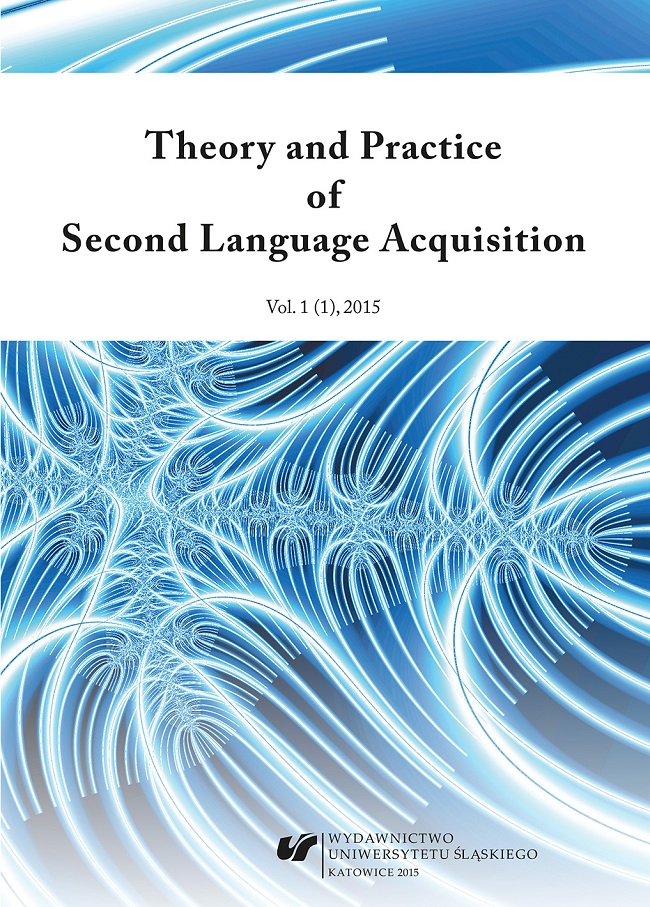Büring, D. (1997) The great scope inversion conspiracy. Linguistics and Philosophy 20, 175-194.
Google Scholar
Fodor, J.D. (2002) Prosodic Disambiguation in Silent Reading. NELS 32, 113-132.
Google Scholar
Fultz, A. (2007) Prosody in syntactic disambiguation in English-French interlanguage. Proceedings of the Annual Boston University Conference on Language Development 32, 394-405.
Google Scholar
Gualmini, A. (2004) Some knowledge children don’t lack. Linguistics 42, 957-982.
Google Scholar
Goss, S. and Nakayama, M. (2011) Prosodic Production and Sentence Comprehension in L2 Japanese. Second Language 10, 33-50.
Google Scholar
Hattori, N., Ayano, S., Herrick, D., Stringer, D., and Sugisaki, K. (2006) Topics in child Japanese. In Y. Otsu (ed.) Proceedings of the seventh Tokyo conference on psycholinguistics (pp. 103-120).
Google Scholar
Jackendoff, R. (1972) Semantic interpretation in generative grammar. Cambridge, MA: MIT Press.
Google Scholar
Jun, S.-A. (2003) Prosodic Phrasing and Attachment Preferences. Journal of Psycholinguistic Research 32 (2), 219-249.
Google Scholar
Kamiya, M. and Look, W. (2012) Prosody and Scope Interactions in L2 Japanese Learners. L2 Prosody Workshop, Bangor University, North Wales, UK.
Google Scholar
Krajlic, T. and Brennan, S.E. (2005) Prosodic disambiguation of syntactic structure: For the speaker or for the addressee? Cognitive Psychology 50, 194-231.
Google Scholar
Kuno, S. (1973) The Structure of the Japanese Language. Cambridge, MA: MIT Press.
Google Scholar
Ladd, R. (1996) Intonational phonology. Cambridge: Cambridge University Press.
Google Scholar
Leddon, E.M. (2003) Suprasegmental cues to meaning in child-directed speech. Qualifying paper. Northwestern University.
Google Scholar
Leddon, E.M., Lidz, J. and Pierrehumbert, J.B. (2004) Suprasegmental cues to meaning in child-directed speech. CUNY Sentence Processing Conference, College Park, MD.
Google Scholar
Liberman, M. and Sag, I. (1974) Prosodic form and discourse function. Chicago Linguistic Society 10, 416-427.
Google Scholar
Lingel, S., Pappert, S. and Pechmann, T. (2006) The prosody of German PP-attachment ambiguities: Evidence from production and perception. Poster presentation at the 12th Annual Conference on Architectures and Mechanisms for Language Processing (AMLaP), Nijmegen, The Netherlands.
Google Scholar
Maynell, L. (2005) Prosodic Effects of Relative Clause Attachment in English. Unpublished Manuscript. The Ohio State University.
Google Scholar
Musolino, J. (1998) Universal Grammar and the Acquisition of Semantic Knowledge. PhD thesis, University of Maryland.
Google Scholar
Musolino, J., Crain, S. and Thornton, R. (2000) Navigating negative quantificational space. Linguistics, 38-41.
Google Scholar
Musolino, J. and Gualmini, A. (2004) The role of partitivity in child language. Language Acquisition 12(1), 97–107.
Google Scholar
Musolino, J. and Lidz, J. (2006) Why Children aren’t universally successful with quantification. Linguistics 44 (4), 817–852.
Google Scholar
Nakanishi, K. (2007) Prosody and scope interpretations of the topic marker wa in Japanese. In C. Lee et al. (eds.) Topic and focus: cross-linguistic perspectives on meaning and intonation (pp. 177-193).
Google Scholar
Pierrehumbert, J. and Hirschberg, J. (1990) The meaning of intonational contours in the interpretation of discourse. In P.R. Cohen, J. Morgan, and E.E. Pollack (eds) Intentions in Communication (pp. 271-311). Cambridge, MA: MIT press.
Google Scholar
Schafer, A., Speer, S., Warren, P. and White, D. (2000) Intonational disambiguation in sentence production and comprehension. Journal of Psycholinguistic Research 29, 169-182.
Google Scholar
Snedecker, J. and Tueswell, J. (2003) Using prosody to avoid ambiguity: Effects of speaker awareness and referential context. Journal of Memory and Language 48, 103-130.
Google Scholar
Sperber, D. and Wilson, D. (1986) Relevance: communication and cognition. Cambridge, MA: Harvard University Press.
Google Scholar
Steedman, M. (1991) Structure and Intonation. Language 67, 260-296.
Google Scholar
Tsujimura, N. (2014) An Introduction to Japanese Linguistics. Third Edition. Malden, MA: John Wiley & Sons Ltd.
Google Scholar
Ward, G., and J. Hirschberg, J. (1985). Implicating uncertainty: the pragmatics of fall-rise intonation. Language 61, 747-776.
Google Scholar
Wilson, D. and Sperber, D. (2004) Relevance Theory. In L. Horn and G. Ward (eds), The handbook of pragmatics. Malden, MA: Blackwell Publishing Ltd.
Google Scholar



 10.31261/tapsla
10.31261/tapsla